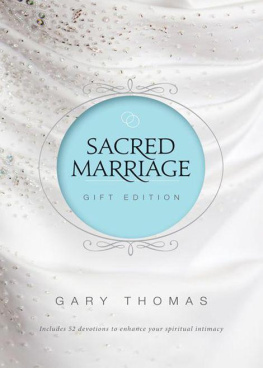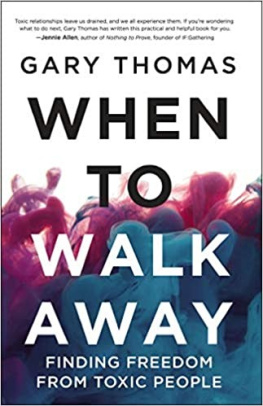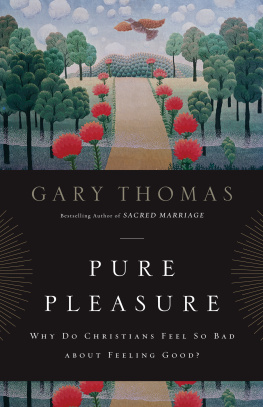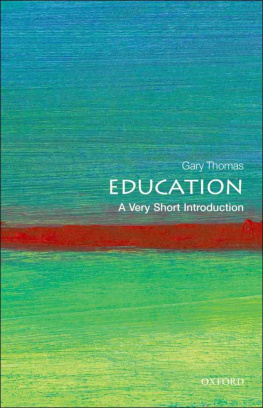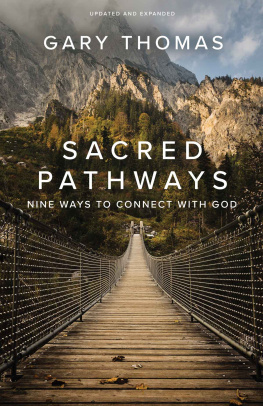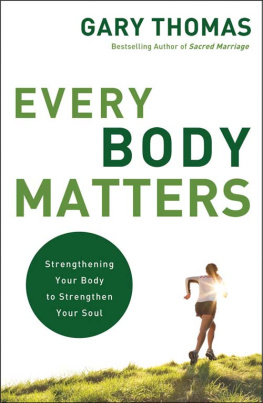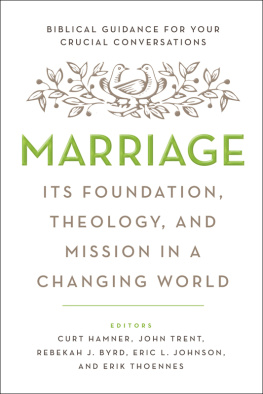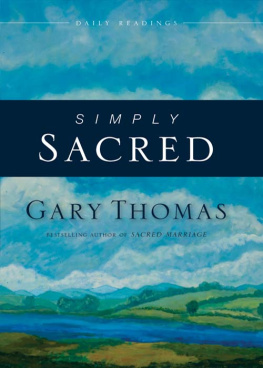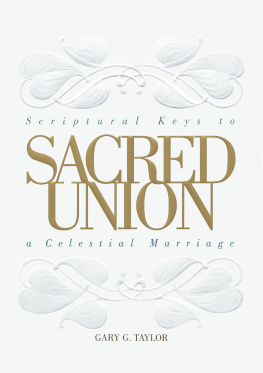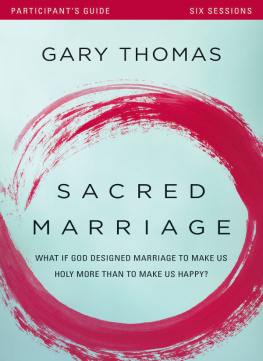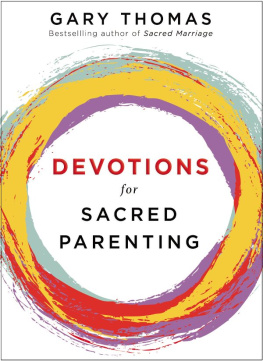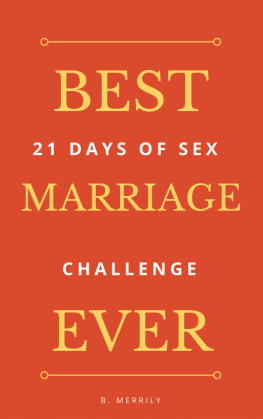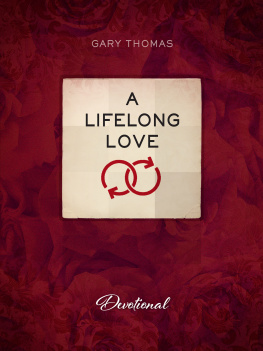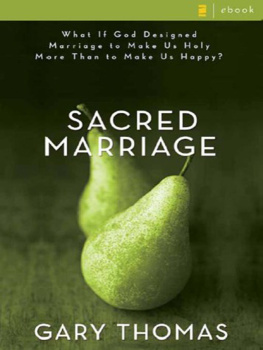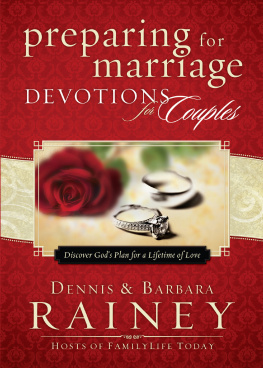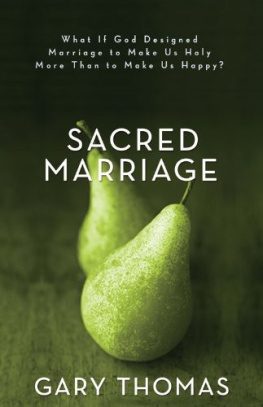My wife and I experience great joy whenever we read and hear the testimonies of those who have read the book you now hold in your hands. The perspective that perhaps God created marriage to make us holy even more than to make us happy has apparently been used by God to restore many homes, reenergize flagging commitments, and open up couples eyes to the marvelous work God is doing in their souls.
Marriage is filled with remarkable joys, even occasional ecstasies, but it can often lead us through times of tremendous pain. Lisa and I count it an honor that, by means of this book, we can walk through part of this journey with you. We are delighted that Zondervan has decided to make available this beautiful gift edition, which contains not only Sacred Marriage but Devotions for a Sacred Marriage as well.
Thank you for joining us on this journey of exploring how God uses our marriages to glorify his name and transform us into the image of his Son.
May God bless you as you seek to serve him by becoming the man or woman he created you to be; and may God continue to make your marriage a truly sacred, soul-shaping union that reflects Christs love for the church.
1
The Greatest Challenge in the World
A Call to Holiness More Than Happiness
By all means marry. If you get a good wife, youll become happy. If you get a bad one, youll become a philosopher.
S OCRATES
Like everything which is not the involuntary result of fleeting emotion but the creation of time and will, any marriage, happy or unhappy, is infinitely more interesting than any romance, however passionate.
W.H. A UDEN
I M GOING TO CUT HIM OPEN.
Historians arent sure who the first physician was who followed through on this thought, but the practice revolutionized medicine. The willingness to cut into a corpse, peel back the skin, pull a scalp off a skull, cut through the bone, and actually remove, examine, and chart the organs that lay within was a crucial first step in finding out how the human body really works.
For thousands of years physicians had speculated on what went on inside a human body, but there was a reluctance and even an abhorrence to actually dissect a cadaver. Some men refrained out of religious conviction; others just couldnt get over the eeriness of cutting away a human rib cage. While an occasional brave soul ventured inside a dead body, it wasnt until the Renaissance period (roughly the fourteenth to the sixteenth century) that European doctors routinely started to cut people open.
And when they did, former misconceptions collapsed. In the sixteenth century, Andreas Vesalius was granted a ready supply of criminals corpses, allowing him to definitively contradict assumptions about the human anatomy that had been unquestioned for a thousand years or more. Vesaliuss anatomical charts became invaluable, but he couldnt have drawn the charts unless he was first willing to make the cut.
I want to do a similar thing in this bookwith a spiritual twist. Were going to cut open numerous marriages, dissect them, find out whats really going on, and then explore how we can gain spiritual meaning, depth, and growth from the challenges that lie within. Were not after simple answers three steps to more intimate communication, six steps to a more exciting love life because this isnt a book that seeks to tell you how to have a happier marriage. This is a book that looks at how we can use the challenges, joys, struggles, and celebrations of marriage to draw closer to God and to grow in Christian character.
Were after what a great Christian writer, Francis de Sales, wrote about in the seventeenth century. Because de Sales was a gifted spiritual director, people often corresponded with him about their spiritual concerns. One woman wrote in great distress, torn because she very much wanted to get married while a friend was encouraging her to remain single, insisting that it would be more holy for her to care for her father, and then devote herself as a celibate to God after her father died.
De Sales put the troubled young woman at ease, telling her that, far from being a compromise, in one sense, marriage might be the toughest ministry she could ever undertake. The state of marriage is one that requires more virtue and constancy than any other, he wrote. It is a perpetual exercise of mortification. From this thyme plant, in spite of the bitter nature of its juice, you may be able to draw and make the honey of a holy life.
Notice that de Sales talks about the occasionally bitter nature of marriages juice. To spiritually benefit from marriage, we have to be honest. We have to look at our disappointments, own up to our ugly attitudes, and confront our selfishness. We also have to rid ourselves of the notion that the difficulties of marriage can be overcome if we simply pray harder or learn a few simple principles. Most of us have discovered that these simple steps work only on a superficial level. Why is this? Because theres a deeper question that needs to be addressed beyond how we can improve our marriage: What if God didnt design marriage to be easier? What if God had an end in mind that went beyond our happiness, our comfort, and our desire to be infatuated and happy as if the world were a perfect place?
What if God designed marriage to make us holy more than to make us happy? What if, as de Sales hints, we are to accept the bitter juice because out of it we may learn to draw the resources we need with which to make the honey of a holy life?
Romanticisms Ruse
If this sounds like a radically different view of marriage, its important to remember that the very concept of romantic love, which is so celebrated in movies, songs, and cheap paperbacks, was virtually unknown to the ancients. There were exceptions one need merely read the Song of Songs, for instance but taken as a whole, the concept that marriage should involve passion and fulfillment and excitement is a relatively recent development on the scale of human history, making its popular entry toward the end of the eleventh century.
C. S. Lewiswhose marriage to an ailing woman was seen as somewhat odd by many of his contemporaries explained that such a monumental shift in cultural thought as the development of romantic love is very rarethere are perhaps three or four on record but I believe that they occur, and that this [romantic love] is one of them.
This is not to suggest that romance itself or the desire for more romance is necessarily bad; good marriages work hard to preserve a sense of romance. But the idea that a marriage can survive on romance alone, or that romantic feelings are more important than any other consideration when choosing a spouse, has wrecked many a marital ship.
Romanticism received a major boost by means of the eighteenth-century Romantic poets Wordsworth, Coleridge, and Blake followed by their successors in literature, Byron, Shelley, and Keats. These poets passionately argued that it was a crime against oneself to marry for any reason other than love (which was defined largely by feeling and emotion), and the lives of many of them were parodies of irresponsibility and tragedy.
One of the writers who embraced this romantic notion with fervor was the sensuous novelist D. H. Lawrence, whose motto was with

